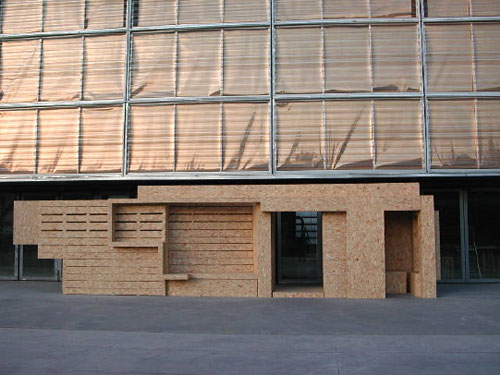
lecture by Grégoire Chelkoff
THE BODY SCALE OF DESIGN TOWARD A SONIC ERGONOMY: A KINESIC APPROACH
Precedent works have shown us that a lot of sonic effects are efficient on short distance. Several researches – in habitations, working places or public spaces, and especially around transportation system – have shown us that adaptative behaviors are necessary to improve the listening of others, direct vocal communication or simply remain waiting, sitting or standing. These uses are based on the skills of each inhabitants to act in different sonic situations. So we have been more interested in working at the space scale of those ambient architectural compounds that imply a direct interaction with the human body. It leads us to think of ordinary urban objects such as doors, places to sit or to wait, shelters. Around such minimal spaces, a whole array of moving modalities linked to the use of voice and hear are identified : bypassing, sitting or leaning modalities going through, crossing a sonic area, rotating. This array of actions which come close to the will of movement make the hearer’s immediate sonic milieu drift. It incites us to imagine what one may do with one’s sonic environment, or more globally, with one’s ambience.
Space and sound are linked by motion. We talk and hear in motion. The sonic design of space could be thank whitin this active dimension in mind. It is to be preferred to the passive conception of hearing in the sonic environment which is usually considered in order to understand how it is appreciated or how it is identified.
AN EXPERIMENTAL APPROACH
According to these principles, recent experimental models of construction which were built on the scale of the human body in movement, allow us to test design and spatial compounds and potentialities of uses in sonic context. While digital and sophisticated tools are being developed, our experimentations are to a great extent hand-crafted (panels of wood and screws).
Another aspect of these experimentations consists in sonorizing the object in order to create a situation. On a methodological aspect a scenario with several persons (ordinary people, acousticians, partially sighted persons) have been tested.
These experiments can contribute to develop a sensitive ecology of architectural forms.
Our goal was to model a form that creates a situation in which a lot of possibilities of uses are afforded. The prototype is furthermore transposable to other public contexts. This kind of equipment could find its place in different situations: to create a passage between a building and a street, or to offer a furniture in such places as underground public spaces, or big atria where the sonic environment is usually too homogeneous with great reverberation and ubiquity. This equipment could locally offer possibilities to escape these effects.
appearance at Tuned City
design for acoustic environments / 04.07.08